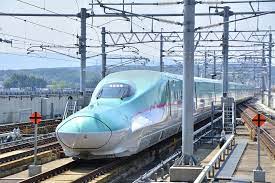The Scramble Crossing in Shibuya, Tokyo, is famous for masses of people crisscrossing the crossroads in a sight representing metropolitan Japan’s congestion and anonymity. It’s possible that it’s introduced another boasting right.
Since April 1, Tokyu Railways’ trains traveling through Shibuya and other stations have been powered only by solar and other renewable energy sources.
That means Tokyu’s enormous network of seven train lines and one tram service now emits zero carbon dioxide, thanks to the usage of green energy at all of its stops, including vending machines, security camera displays, and lighting.
Tokyu which employs 3,855 people and connects Tokyo and Yokohama is Japan’s first train company to fulfill that goal. The reduction in carbon dioxide is equal to the annual average emissions of 56,000 Japanese families, according to the report.
Nicholas Little, director of railway education at Michigan State University’s Center for Railway Research and Education, applauded Tokyu for supporting renewable energy but emphasized the need of increasing the bottom-line amount of renewable energy.
“I would emphasize that boosting electricity output from renewable sources has the greatest impact,” he stated. “The long-term challenge is to grow renewable electricity production and build the transmission infrastructure to transmit it to consumers.”
Tokyu’s trains feature some of the most environmentally friendly rail technology available. Batteries and hydrogen power are the other two choices.
Is this only a publicity stunt, or is Tokyu taking the right steps?
The answer, according to Ryo Takagi, a professor at Kogakuin University and an expert in electric railway systems, isn’t straightforward because train technology improves over time and is influenced by a variety of unpredictable societal circumstances.
In a nutshell, Tokyu’s efforts are not ineffective and are likely preferable to doing nothing. They demonstrate that the corporation is up to the task of promoting renewable energy, he said.
“However, I’m not going to go out of my way to laud it,” Takagi remarked.
Converting from diesel trains to hydrogen-powered lines in rural areas, as well as switching from gas-guzzling cars to electric, would provide greater benefits, he claimed.
Tokyu paid an undisclosed sum to Tokyo Electric Power Co., the company responsible for the Fukushima nuclear disaster in 2011, in exchange for certification certifying its use of renewable, despite Japan’s continued use of coal and other fossil fuels.
“We don’t consider this as achieving our aim, but rather as a beginning,” said Assistant Manager Yoshimasa Kitano, who works at Tokyu’s offices, which is a short walk from the Scramble Crossing.
These actions are critical if Japan, the world’s sixth-largest carbon emitter, is to meet its objective of becoming carbon-neutral by 2050.
According to the Institute for Sustainable Energy Policies, a Tokyo-based independent non-profit research group, only approximately 20% of Japan’s electricity comes from renewable sources.
This is in stark contrast to New Zealand, where renewable energy sources account for 84 percent of total energy consumption. New Zealand aspires to achieve this goal by 2035.
Hydropower, geothermal power, wind power, and solar power are among the renewable energy sources that power Tokyu trains, according to Tokyo Electric Power Co., the utility that delivers the electricity and tracks its energy sourcing.
Tokyu has over 100 kilometers (64 miles) of railway tracks that serve 2.2 million people every day, including commuting “salarymen” and “salary women” as well as uniformed kids.
Since the Fukushima nuclear accident, when a tsunami triggered by a huge earthquake melted three reactors, Japan has shut down most of its nuclear plants and increased its reliance on coal-fired power plants.
By 2030, the country wants to get 36 percent to 38 percent of its energy from renewable sources while reducing overall energy consumption.
Tokyu Railways has used posters and YouTube videos to promote its efforts.
Still, Ryuichi Yagi, the owner of a company that used to create neckties but now makes wallets, was taken aback when he learned he was on a “green train.”
He admitted, “I had no idea.”
Because of Japan’s “cool biz” craze, Yagi changed his business. It encourages male office workers to ditch their suits in favor of open-necked short-sleeve shirts to save energy by reducing the use of air conditioning throughout the summer.
“I have a very green life,” he stated in a way.

















